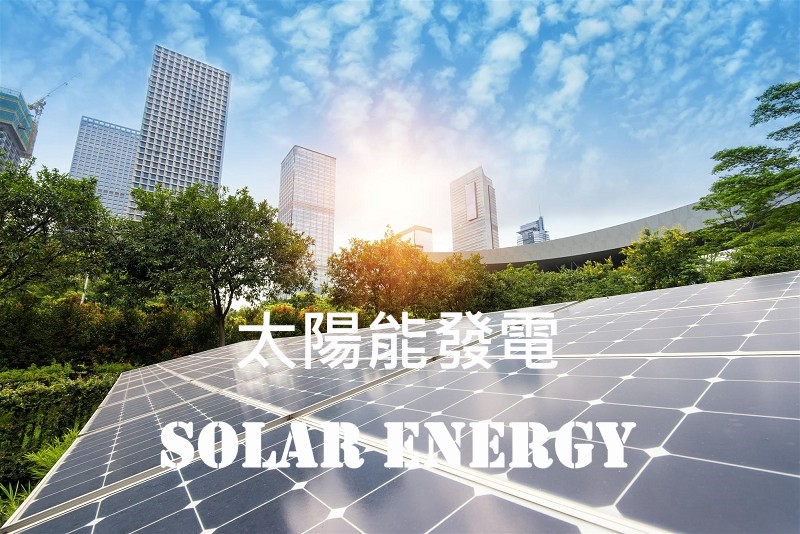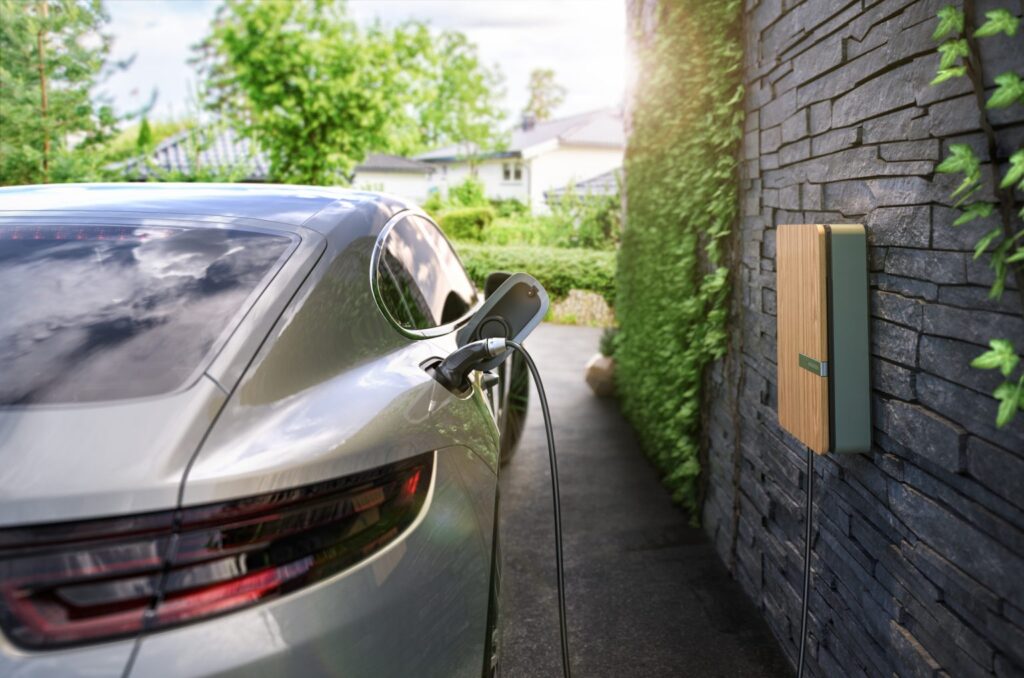太陽能常見問題

1.為什麼會產生再生能源的發展?
由於1970年起,人類的發展所用到的能源導致做成石油危機,人類為了發展及生活所需,可再生能源的使用及發展慢慢普及。以前人類所產生的可再生能源主要是人力和畜力,到後來1900年人類的主要生產能源是石油和天然氣。直到現今風能和太陽能在2010年同樣產生重要,無論太陽能或是風能都有優點與缺點,所以人類不斷推行及發展更多的可再生能源從而慢慢取代舊有的能源,減低能源污染環境的弊病。
2.可再生能源真的能取代為現今社會的能源嗎?
全球各地現今都漸漸可再生能源的發展,無論國家、政府、人民都漸漸減少對原油、煤炭、天然氣、核能等的有限能源的依賴。除著發展的進步,所推行的電動車、太陽能/風力/水力發電等都在為社會發展及環保與時並進。除此環保潔淨之外,同樣避免造成泡沫經濟,可再生能源的成本低及不容易造成全面停電並且全球銀行亦通過民調得知有15個國家都在推行可再生能源政策,當中包括美國、中國、台灣、英國、德國和日本等地方。德國更加是全國佔35%使用及繼續推動綠色能源發展。
3.什麼是可再生能源?
可再生能源是利用偉大的自然界中的能源產生動力,再生能源可不斷供及,永續能源。
可再生能源包括:
- 太陽能:將太陽光的光能或熱能轉換為電力,常見的有太陽能板、太陽能電池、太陽能熱水器等。
- 水力能:利用水壩或水庫,將高處的水往下流動產生的動能轉換為電力。
- 風力能:將風能轉換為電能,透過風力帶動風扇發電機運作,分為岸上風力發電與離岸風力發電。
- 生質能:利用生物質作為原料,例如農林植物、沼氣、有機廢棄物等,直接利用或經處理產生電力。
- 地熱能:利用地下的熱能,通過熱交換器或蒸汽發電機產生電力或供暖。
- 海洋能:利用海洋的運動、溫差、鹽差等產生的能量,例如潮汐能、波浪能、海水溫差能等。
4.什麼是可再生能源和綠色能源的?
可再生能源指的是可不斷再生的能源,此外綠色能源就是能不破壞自然環境下所產生的能源
5.太陽能發電是什麼?
太陽能是地球上最大的能量來源,太陽所發出的光和熱在現代不斷發展為一種技術,並通過集熱器將能源收集產生電能。太陽能在產生的過程中不會產生任何污染及有害物質,是一種十分純淨的能源。太陽能發電技術在建築發展、農業、交通、日常生活等中都不斷應用。
6.太陽能發電系統會產生輻射影響生活嗎?
除著各國的發展,無論自住或是工商業所設立太陽能光伏發電的地方越來越多,人民都越來越擔心會否造成人體上的危害。首先,人類所認知的輻射其實是對人體細胞造成危害的意思包括:癌症病變及對基因產生影響及變異。但是,光、電磁波、粒子流、熱都稱為輻射。其本上需要了解光伏發電的原理,光伏系統是當太陽的輻射能照射在太陽能材料上吸收再通過逆變器將能源轉化為電流,當中並不會產生電磁波等令人類有害的輻射源。若要比較之下,相較於Wi-Fi、手機及通訊儀器等,太陽能光伏發電所影響人體更加之微,而且其他國家都在推行發展一些電器交通慢慢都普及化,所以不需要擔心會造成人體的危害。
7.新能源夠穩定嗎?
所有新能源都是由大自然中提供,所以本身天氣的變化亦不能百分之一百維持。然而,除著發展的進步所用到一些儲電式的裝置大大改變不穩定的因素。同時,香港中電及港燈都通樣推行「再生能源回購計劃」,此計劃所用到併網光伏系統,當所安裝地區使用的電源足夠,額外的電力電力公司就會回購,同時,若不地源所用量較多亦能購回電源來維持穩定的效益。
EV充電計劃
EV充電常見問題

1. 所使用的充電系統適用什麼電動車? 本公司所採用Teison 充電系統,Teison的產品符合國家,歐洲,美國和日本標準,就連國產電動車大部分都通用。 2.下雨天會造成漏電問題? 關於下雨天能不能安全使用充電系統有報告指出無論電動車或是充電系統所用到的材質都是防水度極佳,由1-8級範圍計算,最高級別為海洋及潛水設備,其次第8級別就是電動車及充電系統,所以使用者不需要擔心下雨天時會出現因天氣受影響的狀況。除此之外,公司亦會在安裝系統時增添保護箱令到使用者更加安心。 3.市面上所提及的極快充及快充有什麼分別? 其實市面上所提及的極快充及快充的分別就類似某些衣服碼數一樣有XXXL及XXL的分別,但其實XXXL應該是XL,而XXL是L的碼數。普遍所講分為兩個類別DC及AC,DC就是所謂的快充,而AC就是中充/慢充。
FAQ
SOLAR ENERGY FAQ

1. Why is the development of renewable energy generated?
Since 1970, the energy used for human development has led to an oil crisis. In order to meet the needs of human development and life, the use and development of renewable energy has gradually become popular. In the past, the renewable energy produced by human beings was mainly manpower and animal power, but in 1900, the main production energy of human beings was oil and natural gas. Until now, wind energy and solar energy are equally important in 2010. Both solar energy and wind energy have advantages and disadvantages. Therefore, human beings continue to promote and develop more renewable energy to gradually replace the old energy and reduce the ills of energy pollution to the environment.
2. Can renewable energy really replace the energy in today’s society?
All over the world are gradually developing renewable energy. Regardless of the country, government, and people, they are gradually reducing their dependence on limited energy such as crude oil, coal, natural gas, and nuclear energy. In addition to the progress of development, the promotion of electric vehicles, solar/wind/hydropower, etc. are all advancing with the times for social development and environmental protection. In addition to being environmentally friendly and clean, it also avoids causing a bubble economy. The cost of renewable energy is low and it is not easy to cause a complete blackout. The Global Bank also learned through polls that 15 countries are implementing renewable energy policies, including the United States, China, Taiwan, UK, Germany and Japan etc. Germany accounts for 35% of the country’s use and continues to promote the development of green energy.
3.What are renewable energy sources?
- Solar energy: convert the light energy or heat energy of sunlight into electricity, commonly used are solar panels, solar cells, solar water heaters, etc.
- Hydraulic energy: the use of dams or reservoirs to convert the kinetic energy generated by the downward flow of high water into electricity.
- Wind energy: convert wind energy into electrical energy, and drive fan generators to operate through wind power, which can be divided into onshore wind power generation and offshore wind power generation.
- Biomass energy: use biomass as raw materials, such as agricultural and forestry plants, biogas, organic waste, etc., to generate electricity directly or after treatment.
- Geothermal Energy: The use of heat from the ground to generate electricity or heating through heat exchangers or steam generators.
- Ocean energy: use the energy generated by ocean movement, temperature difference, and salinity difference, such as tidal energy, wave energy, and seawater temperature difference energy.
4. What is renewable and between green energy?
Renewable energy refers to continuously renewable energy. Therefore, green energy is the energy produced without damaging the natural environment.
5. What is solar power generation?
Solar energy is the largest source of energy on earth. The light and heat emitted by the sun have been continuously developed into a technology in modern times, and the energy is collected through heat collectors to generate electricity. Solar energy does not produce any pollution or harmful substances during the generation process and is a very pure energy source. Solar power generation technology is continuously used in construction development, agriculture, transportation, daily life, etc.
6. Will the solar power generation system produce radiation that affects life?
In addition to the development of various countries, there are more and more places where solar photovoltaic power generation is installed, whether for self-residential or industrial and commercial purposes, and people are increasingly worried about whether it will cause harm to the human body. First of all, the radiation that humans recognize actually means harm to human cells, including: cancerous lesions and the impact and mutation of genes. However, light, electromagnetic waves, particle streams, and heat are all called radiation. Basically, you need to understand the principle of photovoltaic power generation. The photovoltaic system absorbs the sun’s radiation energy when it shines on solar materials and then converts the energy into current through the inverter. It does not produce electromagnetic waves or other radiation sources that are harmful to humans. In comparison, compared to Wi-Fi, mobile phones and communication equipment, solar photovoltaic power generation has a much smaller impact on the human body, and other countries are promoting the development of some electrical appliances and transportation are gradually becoming popular, so there is no need to worry about it. causing harm to the human body.
7. Can new energy be stable?
All new energy is provided by nature, so the change of weather itself cannot be maintained 100%. However, the advancement of development use of some power storage devices greatly changes the instability factors. At the same time, both CLP and HK Electric in Hong Kong generally implement the “Renewable Energy Buyback Plan”. This plan uses grid-connected photovoltaic systems. When the power supply used in the installation area is sufficient, the power company will buy back the additional power. At the same time, if It is also possible to buy back the power supply to maintain a stable benefit even if the amount used by the non-ground source is large.
EV CHARGING PROGRAM
EV Charging FAQ

1. What type of electric vehicle is the charging system used for? Our company uses the Teison charging system. Teison's products comply with national of European, American and Japanese standards, and are common even for most domestic electric vehicles. 2. Will rainy days cause electricity leakage problems? Regarding whether the charging system can be used safely on rainy days, reports indicate that the materials used in electric vehicles and charging systems are extremely waterproof, calculated on a scale of 1-8, with the highest level being marine and diving equipment, followed by level 8. It is an electric vehicle and charging system, so users don't need to worry about being affected by the weather when it rains. In addition, the company will also add a protective box when installing the system to make users feel more at ease. 3. What is the difference between ultra-fast charge and fast charge mentioned in the market? In fact, the difference between ultra-fast charging and fast charging mentioned on the market is similar to the difference between XXXL and XXL in the size of some clothes, but in fact XXXL should be XL, and XXL is the size of L. Generally speaking, it is divided into two categories: DC and AC. DC is the so-called fast charge, and AC is the medium charge/slow charge.

